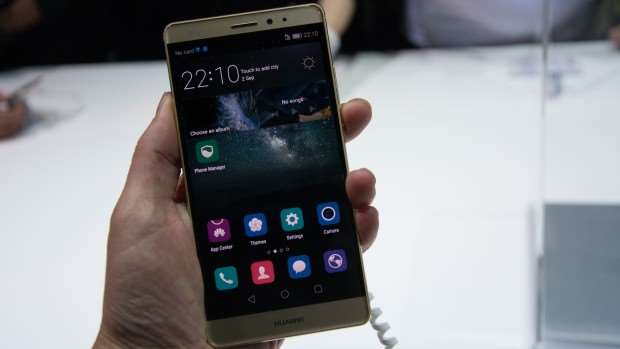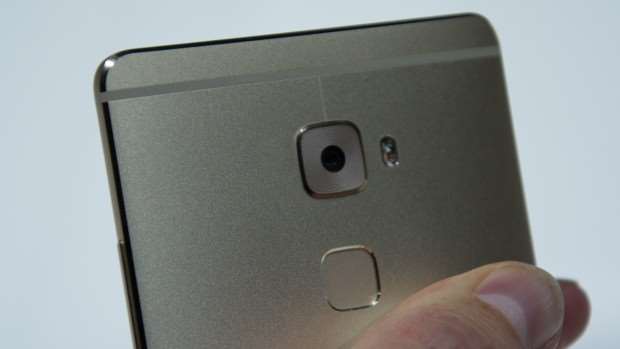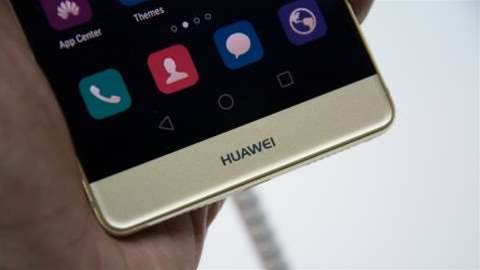Huawei boldly took on the mighty Apple iPhone 6 Plus with the launch of its latest smartphone at the IFA technology trade show in Berlin.
In a series of comparison slides, Huawei repeatedly pitted the new Huawei Mate S against the iPhone 6 Plus, in an attempt to demonstrate how much it has improved its design nouse.
And with rounded glass edges to the 5.5in full HD AMOLED screen (topped with Gorilla Glass 4), dual diamond-cut chamfered edges measuring a mere 2.65mm at the thinnest point (and a still thin 7.1mm at its thickest point), curved metal rear and new fingerprint reader, it certainly looks the part. The phone is also water resistant, and comes in four different colours: pink, champagne, grey and gold.
Where the Mate S' really socks it to the iPhone 6 Plus, though, is with its new touchscreen: the Mate S beats Apple to the punch to become the first to feature force touch on the display.
This can be used to zoom in and out of photos and navigate quickly through the phone's gallery app. You can press harder in the phone's “magic corners” to quickly launch various apps, and when the Android back, home and multitasking buttons are hidden, you can press hard where they ought to be to activate them instantly, and when I tried these at the press event, they worked well.

The main issue I have is that you currently can't do much with it right now, and the features that are in place seem a little pointless. To compound this, only purchasers of the “Luxury” 128GB version get the force touch screen, and prices for that haven't yet been revealed.
The lesser 64GB and 32GB versions do have prices, however, and they're set to cost 649 and 699 Euros respectively ($1040 and $1120). I'd expect the force touch version to cost at least 749 Euros ($1200), if not more.
Fingerprint reader and Knuckle Sense 2
Fortunately that isn't the end to the Mate S' talents. Just like the Honor 7, the Mate S has a square, one-touch fingerprint reader, embedded on the rear of the phone, just below the camera. As well as simply unlocking the phone, this can be used to do a little more, such as navigating through your notifications and photos, answering phone calls and taking selfies.
The Mate S also heralds the next generation of Huawei's crazy “Knuckle Sense” capability. You can still double-tap with a knuckle to take a screenshot, but the Mate S adds the ability to crop screenshots or cut out irregular shapes by tracing a shape, or capture a full webpage by dragging your knuckle up the screen.
There's also live video screen-sharing via a “two knuckle, double knock” gesture, plus the ability to draw letters with a knuckle to launch the camera and other apps. It's also possible to customise this feature to launch whatever app you like.
Camera
The Mate S' camera looks pretty decent. The rear-facing snapper has a resolution of 13 megapixels with a four-colour RGBW sub-pixel array – just like the Huawei P8 – and the camera is equipped with a dedicated “DSLR-class” image processor chip and optical image stabilisation.
As is becoming increasingly popular among smartphone manufacturers, the Mate S has a fully-fledged Manual mode, giving control over settings such as shutter speed and ISO among others. And there's a smattering of new software features, including a couple of new black and white filters, plus the ability to square-up skewiff photos (such as wonky business cards or spec sheets) as you shoot them.

Meanwhile, the front-facing camera has a resolution of eight megapixels and an aperture of f/2.4, plus an improved beauty filter and a front-facing, “soft-light” flash.
Other specifications
In terms of its core specifications, there's nothing particularly surprising here. The Mate S has a 64-bit octacore HiSilicon Kirin 935 SoC with 3GB of RAM to back it up and 32/64/128GB of storage, so it should perform just like the Huawei P8.
The battery has a capacity of 2,700mAh – so nothing in particular to write home about there – NFC, dual SIM slots, one of which doubles as a microSD cards expansion slot.
And business users take note: the Huawei Mate S also has three microphones, enabling “directional listening” in speakerphone dalls. The idea is that, by focussing on individuals huddled around the phone, the phone can eliminate “side noise”. I'd love to see if this works.

There's support for fast charging, the phone comes supplied with a set of metal earbuds with a wind-noise cancellation feature, and the phone runs Android 5.1.1 (Lollipop) with Huawei's cusromary Emotion UI 3.1 on top.
Early verdict
As with the Huawei P8, the Huawei Mate S looks like another solid smartphone offering from the Chinese smartphone giant. It's good to look at, packed with all the features you could possibly want and a few extras to boot.
The decision not to include the force touch screen on all models, though, is more than a little disappointing.
This article originally appeared at alphr.com





.png&h=142&w=230&c=1&s=1)

.png&h=142&w=230&c=1&s=1)


.png&w=100&c=1&s=0)




.png&h=298&w=480&c=1&s=1)






